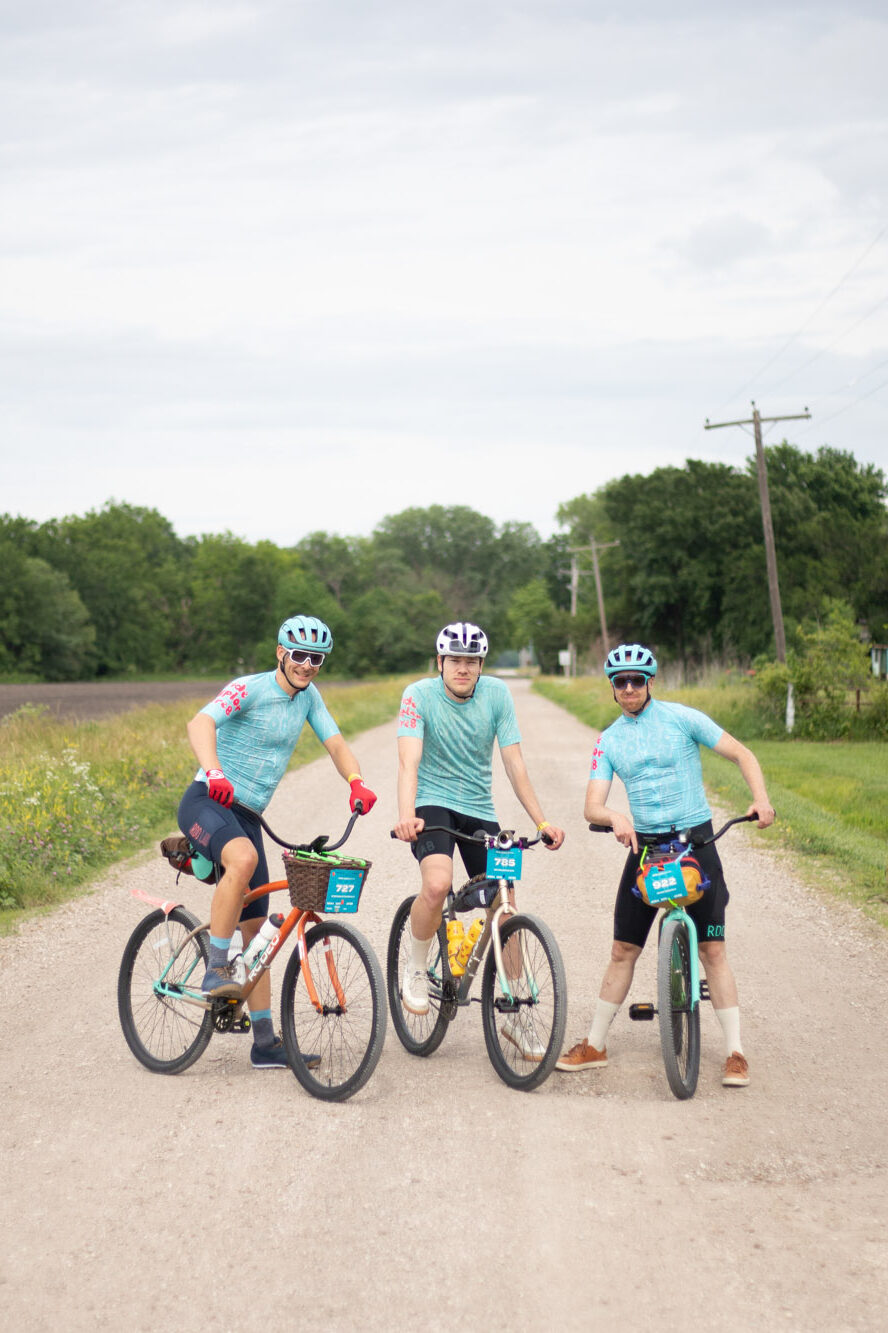The 2024 edition of Unbound was, predictably enough, about the biggest thing in the cycling world last weekend. There was a stacked field of gravel pros; there was a cast of recent and current WorldTour pros lining up for the jewel in the gravel crown; there was a popular male winner in EF Education-EasyPost’s Australian vibes-king Lachlan Morton, and a surprise female winner in the unheralded German Rosa Klöser. But across many of the more gravel-focused media outlets, the biggest story was not at the front of the race but towards the back: a trio of riders aligned with the small adventure bike brand, Rodeo Labs, who raced 200 miles (320 km) across the Flint Hills of Kansas on budget beach cruisers they’d sourced at Walmart in the days before the event.
There was an audaciousness to the attempt, underpinned by the apparent unsuitability of their tool for the task – especially in this edition of Unbound, which pushed ever further in the direction of polished professionalism instead of rough-hewn “vibes.” But as it turns out, the enormous response to the beach cruiser ride revealed much more than that fit people can ride far on ill-suited bikes. It has become something bigger: a statement about the current state of gravel cycling, a question about how the sport can evolve when it’s seemingly being pulled in two different directions, and a philosophical pondering about consumerism, the industry, and what deriving happiness from a bike looks like.
In the days after Unbound, I sat down with Escape Collective member Stephen Fitzgerald – one of the riders and the owner of Rodeo Labs – for a thought-provoking discussion about the lead-up to the big day and the deep introspection that followed it.
This conversation has been lightly edited for length and clarity.

Iain Treloar: Okay, Stephen – to kick off, could you just – really big picture – tell me about your ride on the weekend?
Stephen Fitzgerald: Well, big picture, I think the ride was for me an attempt to do Unbound in a way that I had never done it. Having done it seven other times previously, and kind of run the gamut from trying to be as fast as I can to try and get through it on a singlespeed, experiencing the dreaded mud years and everything in between … I really feel like I’ve done everything that a middle-aged guy is capable of doing – at least a guy like me, with a normal job. So looking at year number eight and trying to find a reason to make it to number 10, it was just a matter of looking for some good inspiration; for something fun to try.
Me and my friends rode Unbound on singlespeeds last year, and that ended up being pleasantly enjoyable … we also found inspiration from a bachelor party last fall, where we bought Walmart bikes and did a silly ride just with friends. We realised those bikes can get up and go if you just turn the cranks, and we started joking about how maybe that’s the thing to do this year at Unbound. So, that’s the organic backstory of how this came about.
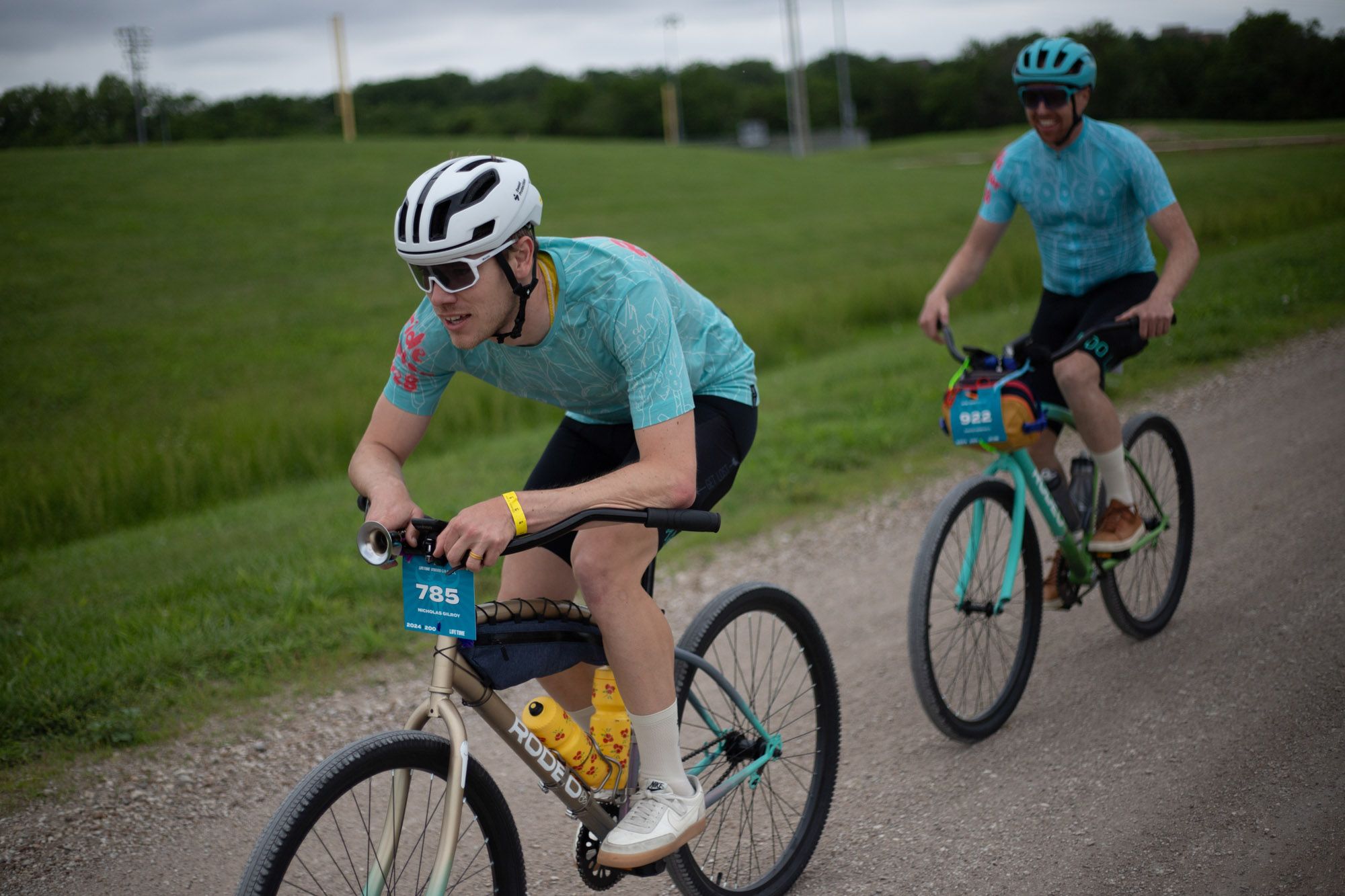
IT: Okay, so these are singlespeed, coaster-brake beach cruisers, bought at Walmart for the princely sum of, what, $200 or something like that?
SF: Yeah, which is sort of a coincidence, but it is a little bit funny to ride a $200 bike for 200 miles. That was a bit of a coincidence. The original bikes that we bought [for the bachelor party] were these 26” pink-basket bikes, you know, and maybe they were $100-150. But when we started really looking at this, wondering, “Do we really think those bikes would make it?”, nobody was really super optimistic. You can get down under $100 for a beach cruiser, but at some point, there’s kind of this threshold where maybe that bike will [not] actually survive. With the help of my mechanic at Rodeo, I said, “Could you help me see what’s out there? Are any of these actually going to make it?” And he said, “I don’t know if they’ll make it. But this one in particular, the 27.5” beach cruiser – a little bit bigger wheels, a little bit more stout, might fit someone at my height – that’s probably the one to pick.” So we kind of arrived at it via the odds of survival.

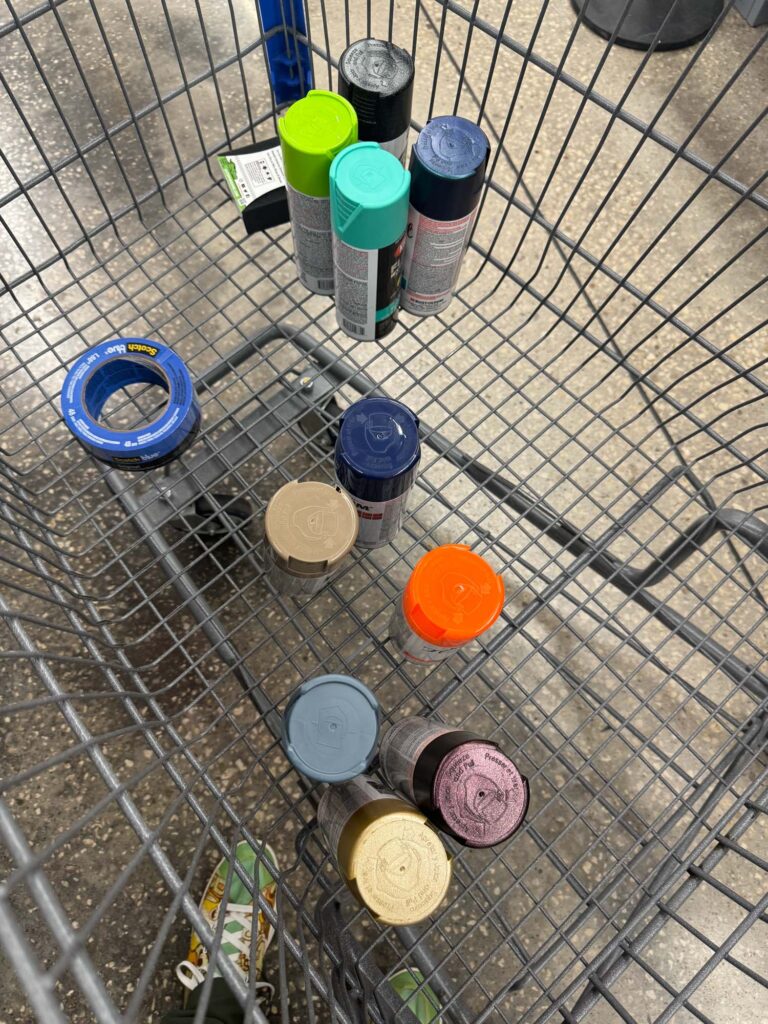
IT: So not a great bike, but not a terrible bike.
SF: Yeah, yeah. A bit of an unknown. I went on one scouting mission to Walmart, because we didn’t know things like what the seatpost diameter is on a cruiser bike. And it turns out, it’s not a seatpost diameter that you would put on a modern road or gravel bike. Then we did a little bit of looking at what the weak points were. So, you know, this project wasn’t without any effort – we didn’t just blunder into the store and walk out. We did some thinking in the two weeks running up to it because we really don’t just want to go and then like faceplant in 10 miles. It is a very difficult race.
IT: Things like the seatpost … and I believe that the pedals were a different diameter for the spindle too, so you couldn’t fit clip-in pedals. So it was all on platform pedals?
SF: Yeah, exactly. There were varying opinions [in the group of three riders] about the purity of the project. Like, should we really just be 100% “You get what comes in the box,” or were we allowed to tinker with it? So we formed a quorum: contact points are up for discussion, and we all wanted to use our clipless pedals. I couldn’t even imagine riding that far on flats … every time I do it, I’m super frustrated. So clipless pedals were in, and the seatposts because there was so little left in the frame if you’re a taller rider that I think it would’ve just folded. So we said, fine, pedals, seatpost, and seat – we can change those things and it still feels like we’re doing nothing.
But when we took the bikes out of the boxes, our pedals just wouldn’t go on: it turns out most basic consumer bikes just use ½” [instead of 9/16”] pedals. This was on Friday night – and we thought plastic pedals probably aren’t even gonna make it. So we did a quick panic shop in Walmart for some metal pedals of questionable quality – but at least they’re made out of metal. That’s gotta be better than plastic. And with that, you know, our fate was sealed. But it ended up being wonderful, actually, to be on flats.

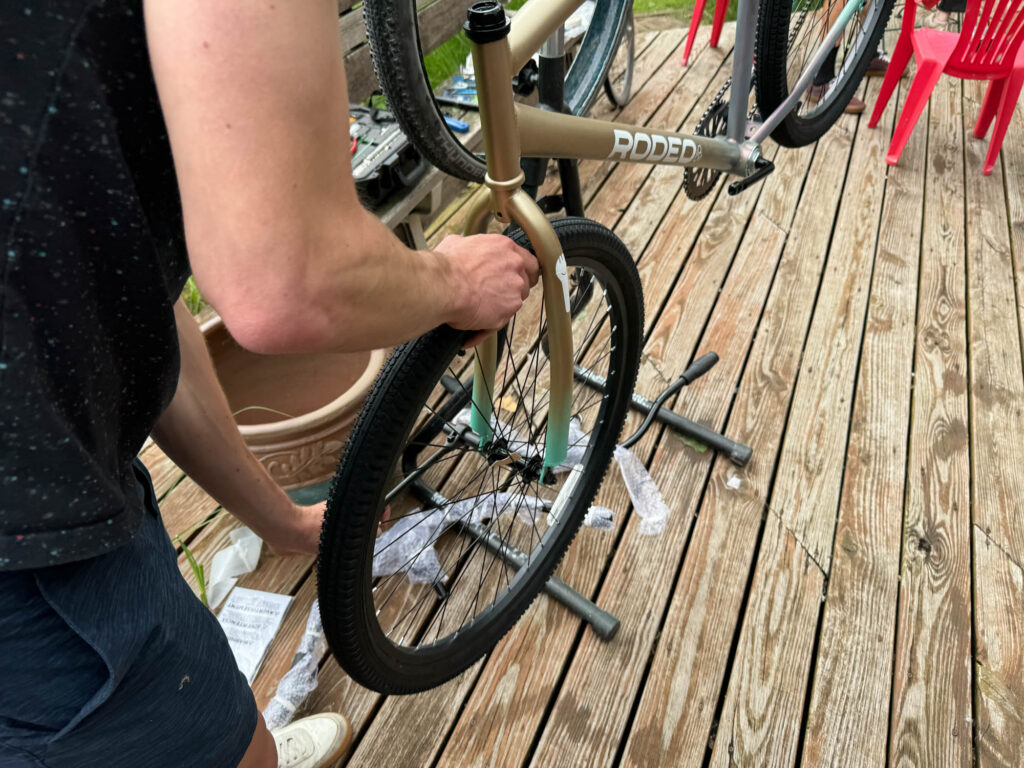
IT: It sounds like there were obviously some reservations heading into the ride in terms of whether the bikes would make it – but I assume that that was more whether the bikes would make it rather than you yourselves would make it physically?
SF: Yeah, I’ve done this enough to know what the event is generally like. I know what the fastest I’ve ever gone is, the slowest I’ve ever gone, and what it’s like on just one gear. So there was enough to know that we’re probably going to be out there for 24 hours or so; we might not make the cutoff, but in spirit, we would still finish it. That was my expectation. And then there were a lot of other questions: the tires were a complete unknown; we didn’t know what came on the bike, they don’t have a brand. We knew they were 27.5”, but you don’t know the size and you don’t know the quality of them.
On our ride in August, when we had bought those pink cruiser bikes, someone’s pedal ripped out of the crank – it stripped and just fell right out of the crank, only a few miles in. So you just don’t know. We made it on that day – maybe we rode for three hours, and we had a good time and one of the bikes failed out of six. But you don’t know if you go twice that distance how many other parts are within an inch of death.
The quill stem has a single bolt with a nut; if you overtighten it, it will probably snap, and if you undertighten it, your bars will slip. But what’s the right torque? Does anybody know? Is it just kind of “farm tight,” where you just wrench it down? So that’s what we did. And then what’s the right angle for the handlebars? Everybody had a different opinion on that.
And the wheels – when we mounted them on the bikes and spun them, they had huge wobbles in all of them. They rolled; there’s no rim brakes, so it kind of doesn’t matter, but I haven’t really thought about folding a rim in like a decade. We were running our tyres rock hard because we had tubes and we didn’t want to pinch flat, so then there’s nothing to protect your rim from sudden abrupt impacts. So as you ride this thing, you realise that you’re just super vulnerable. That’s how we felt for the first couple of hours – just very vulnerable, because this could end right away. That was our outlook as we crossed the start line.

IT: … and then you made it to the finish line! I’ve noticed that in the time since then there seems to have been … well, two things. Firstly: a kind of outpouring of interest in the stories of people at the pointy end; Lachlan Morton, and those kinds of big hitters. But there’s also been this really obvious fascination with your ride.
Now, I think the bike choice is a big part of that – but it does seem that maybe there are some deeper truths behind that response than just “big ride, silly bike.” Why did this ride specifically resonate with people, do you think?
SF: I can only guess the answer to that. But what I’ve heard from some people – the number one theme is “Thanks for showing us that bikes can be simple and fun, and that it isn’t all about the gear.” People recognising that going slow is still fun, just being out with friends is fun, and maybe this sport actually could be more approachable.
Now, those are all pretty significant things for me to think about. I knew that if we did this ride, and we made it, it would be a good story, it would be really fun, and we were pretty careful about announcing what we were doing right at the last minute, and inviting people to follow along. But I didn’t expect people to really pull any deeper meaning out of it, per se; I expected people to either say, “This is really fun, good job,” or I expected people to be really cynical and be like, “What a stunt; you guys are attention whores, and you’re humiliating people who have come to this event who are just trying to finish … you’re just trying to flex on everybody.” So I kind of was preparing my defence for that cynical perspective, if that’s what people are gonna come at us with.
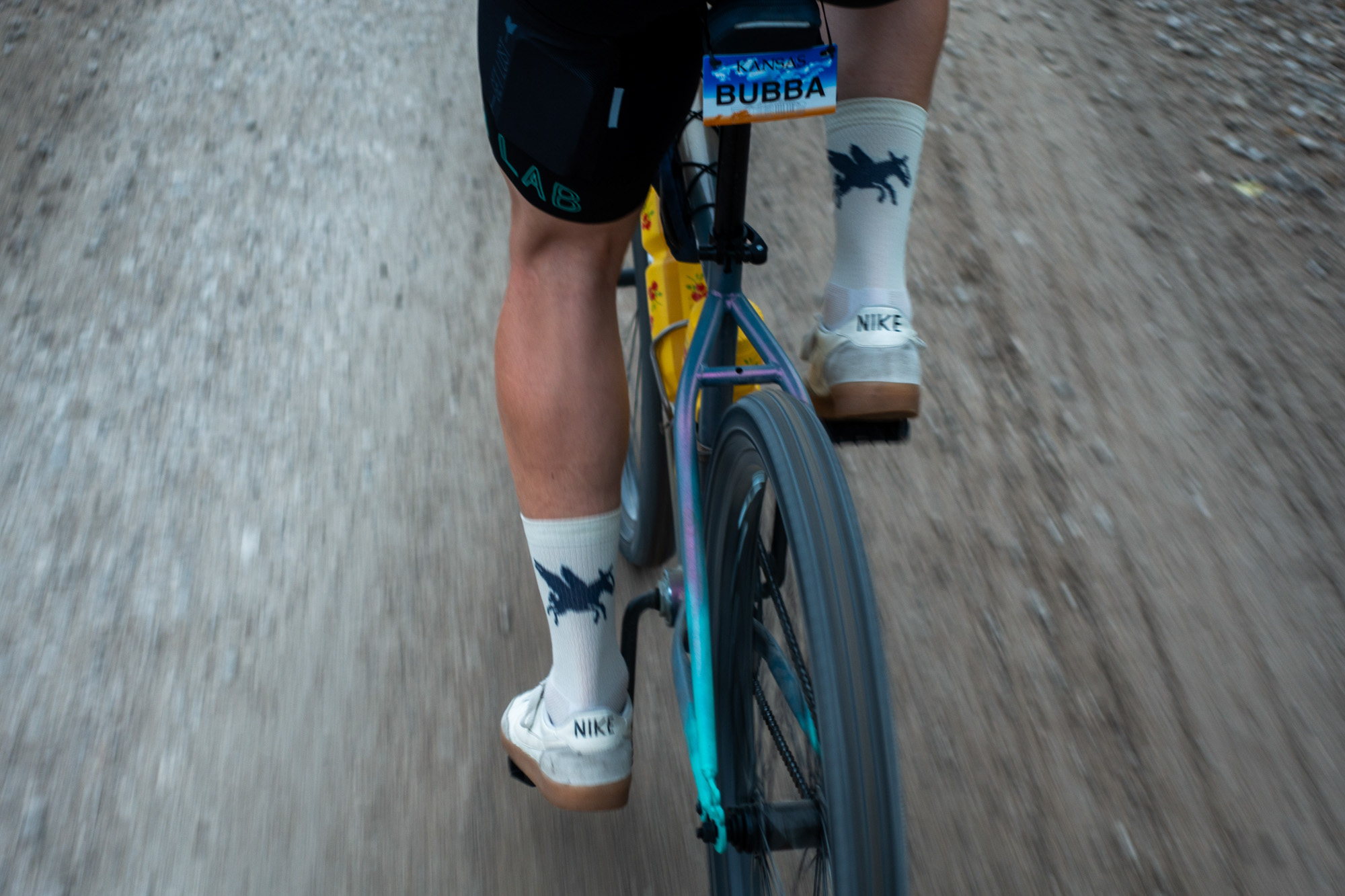
What I didn’t expect, from 98% of the people who took the time to respond, was how everyone was really positive about the whole thing. I think people were really happy to see that Unbound can still be about fun – because it’s trended more and more every year towards the narrative of speed and performance. Which is a wonderful narrative! I mean, I was at mile 100, laying down in the shade at a water stop with, I don’t know, 50 other racers, when they announced that Lachlan had won, and everyone was overjoyed. People care about who wins and what’s happening at the front – and probably especially for Lachlan, because everybody likes him – so it’s not like people don’t want to know or hear about the racing; I think we’re all fascinated with that.
But I was also, at that moment, sitting with a bunch of people who may or may not have had heatstroke, and were fighting their personal demons and thinking about whether or not they would continue or make the time cut. And I don’t know that they feel represented in the dialogue of Unbound, even though they are the majority of Unbound.
If I had to guess I would say, maybe 70% of the people at Unbound are just trying to get to the finish with a time that they are proud of. Maybe 20-30% consider themselves diehard racers at the pointy end. But all of these people are out there. I think there’s a lot of invisibility in that. This genre is supposed to be this new space where everybody’s invited, everybody’s welcome, and it’s supposed to be inclusive. In the beginning, it was just about fun on dirt roads with friends, because that’s all you have. And now it’s become honed and polished into this beautiful, sugarcoated, shiny thing and I think people are a little bit fatigued about that, and a little bit sad to see something that they really liked being turned into the thing that they maybe rejected if they are sort of “post-road” and looking for something new. These people discovered gravel, rediscovered their love for getting on a bike and going out with friends, and now they’re seeing gravel being transformed into a form of this thing that they previously knew. I can see a lot of people being disappointed.
I mean, there’s probably a half dozen nerves there that got touched. [laughs]
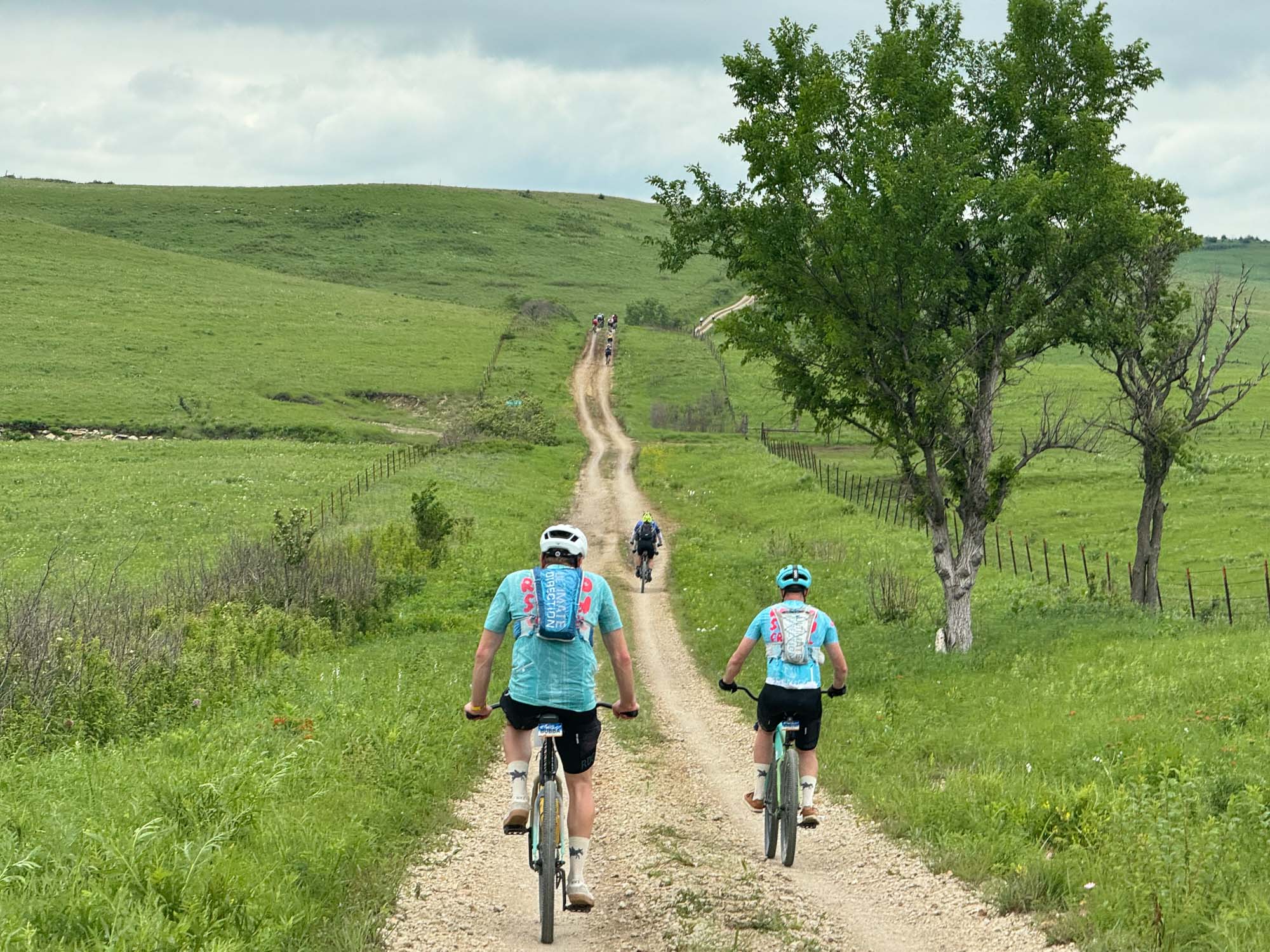
IT: There’s a bit to unpack there. I guess where I land is: as gravel professionalises, and you’ve got the Life Time Grand Prix and big events like Unbound … there’s seemingly this underlying tension within the gravel space. At the race level, it’s super competitive; at the back of the field, there’s this quote unquote “party space.”
I think it’s interesting to consider whether those two things do coexist in the one event – and if they do, whether they can continue to coexist, and whether that focus on the Elite field risks ostracising the people who aren’t in it for those performance-based reasons.
SF: Yeah. And because there’s no real governing party in the space, I think individual race promoters are having to grapple with that question and come up with their own individual interpretations of the right answer. So at Unbound, it used to be a mass start, but from last year, the pros started by themselves and the amateurs started behind them. And I think that was a pivotal moment in the sport. It used to be that we – the proletariat – created this beautiful thing that was untamed, and fun, and wild, and it was ours. I think some people feel possessive that way.
And then the pros came to our thing, to participate and see how they measured up, but once they got there, they started demanding to be treated differently and special. So we get to this sort of BC/AD moment, where it was split and the pros are no longer with us, and our event is no longer the pro event. I think moments like that, begin to create these chapters of change that people are either for or against, and I don’t know that they totally can coexist. And then you layer on the money, marketing, advertising, sales.
I mean, I own a bike company that is completely existentially dependent on the genre being okay. And when the genre does well, we’ll sell more bikes to people. Everybody’s here in this growing genre on a brand and commerce side, hoping that it continues to grow, but the more people that show up at that party or get on that bandwagon to join this vibrant thing, the more economic pressure is put on it. I think, basically, that gravel racing has hit puberty, and it’s an awkward teenager now.
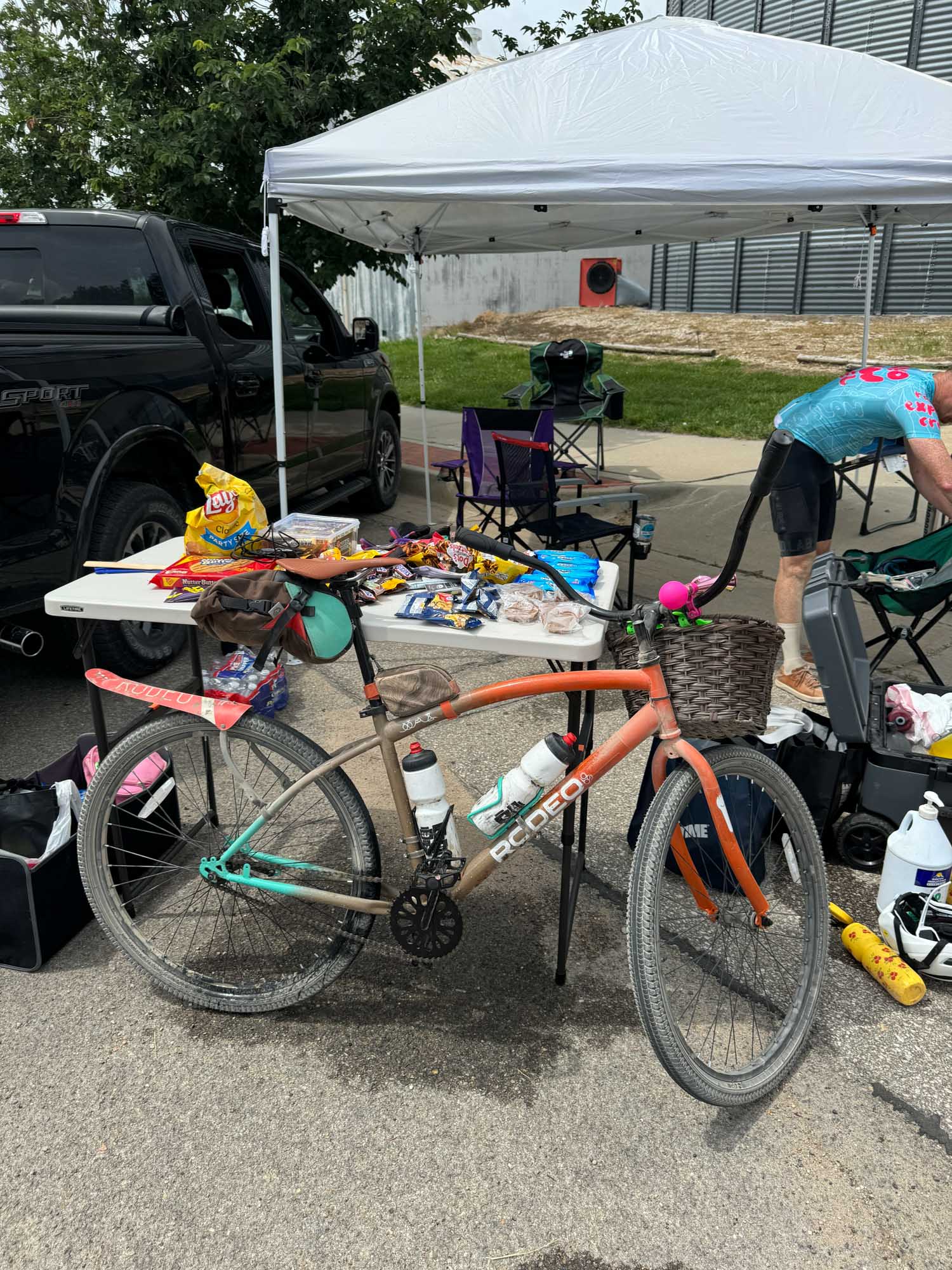
IT: I think that conflict between commerce and community is an interesting one. You mentioned in an email to me earlier that you feel that there are thousands of inspiring stories which are being overlooked by the industry and media. Even at Escape Collective, we carried a race report, a gallery, but the angle of those are, I suppose, more defined by the pros – we haven’t really looked into storylines much beyond that.
So, does this current state of play under-serve the majority of people riding in the event? What impact do you think that has on participation or motivation for the non-competitive crowd? And why do you think that the industry is ignoring those stories in favour of the pros?
SF: Well, I think in terms of participation, it will eventually hurt the events. I think COVID has distorted the statistical predictability of it, but many gravel events are in decline in attendance now. There was a minute there where every gravel event that popped up seemed to sell out and be super vibrant, and now I would say only the tier-one events are selling out. And if you’re just below that at tier two – still a big regional event – you’re now probably not sold out, and you probably have your registration open all the way up until a couple of weeks before the race. I don’t know if that’s because the pros showed up and changed it, but I think some of the shine has worn off, or maybe it’s just the newness. Maybe it’s just that everyone wants to know the band before it’s cool, and when they get big the cool people don’t want to be associated anymore with the big sell-out. It’s kind of a tired trope, but I do think some of that applies to what’s going on in this sport.

And as for the bike industry – I think it doesn’t always have a lot of imagination when it comes to ideas for how to promote a brand or market something. We have the same crutches that we’ve been using for at least the last 30 years, and it’s always about speed and performance and who won. And those things are interesting, sure, but there isn’t any imagination for how to tell an alternate story.
I am myself surprised at how we created that alternate story [at Unbound]. Maybe we blundered into it. Maybe we kind of knew it would be fun. But that ended up being a very sticky story, based on the response – on many websites, it seems to be one of the most popular things that happened that weekend. So if the bike industry was a little bit less repetitive with the narratives that we fall back on as crutches – “What’s the lightest thing or the most aero?”; “What’s the stiffness?” We have these stereotypes that come back over and over and over, and we recycle them.
I think the media and industry could tell interesting stories about both ends of something like Unbound. But it would take more work than maybe the average marketer or storyteller is willing to put into it. There’s a lot left on the table there in terms of opportunity.

IT: There’s something to that, and you can draw a line to participation. You know, there’s this saying which I’ve heard used for women’s sport: “If you can’t see it, you can’t be it.” Do you think we’re reaching an inflection point where people have stopped seeing themselves represented in the gravel space as it becomes more professional?
SF: I do. I think that’s happening. Maybe not in gravel as an entire genre, but in gravel events, I think people see them as not as interesting. Why don’t we just go ride our bikes together? Why don’t we create an alt scene? Or maybe more tribal; maybe smaller tribes. But the idea that we all need to go and gather at regional or national events to kind of express “gravel” – I think that idea is probably in decline.
The Super Bowl will always be the Super Bowl; Unbound is so big that it will always be Unbound. It’s going to be fine, and Mid South is going to be fine. But I think you’ll see the real effects of this in smaller events where people will just say, “Why would I pay that money to ride 100 miles when I can just go ride 100 miles with my friends? The people that are going and doing this event – I don’t like them. They’re vain. They’ve got white socks, white bar tape, really curated kits, and I’m not that person – I don’t see myself there anymore. So I’m going to opt out.”
And you know what, when they do, they’ll create what’s next – they’ll create something fresh out of sort of not being served. That’ s probably where gravel came from, and probably where mountain biking came from, and we will get a new wave of inspiration if that happens. But I don’t know if that’s a one year thing or a 20 year thing.
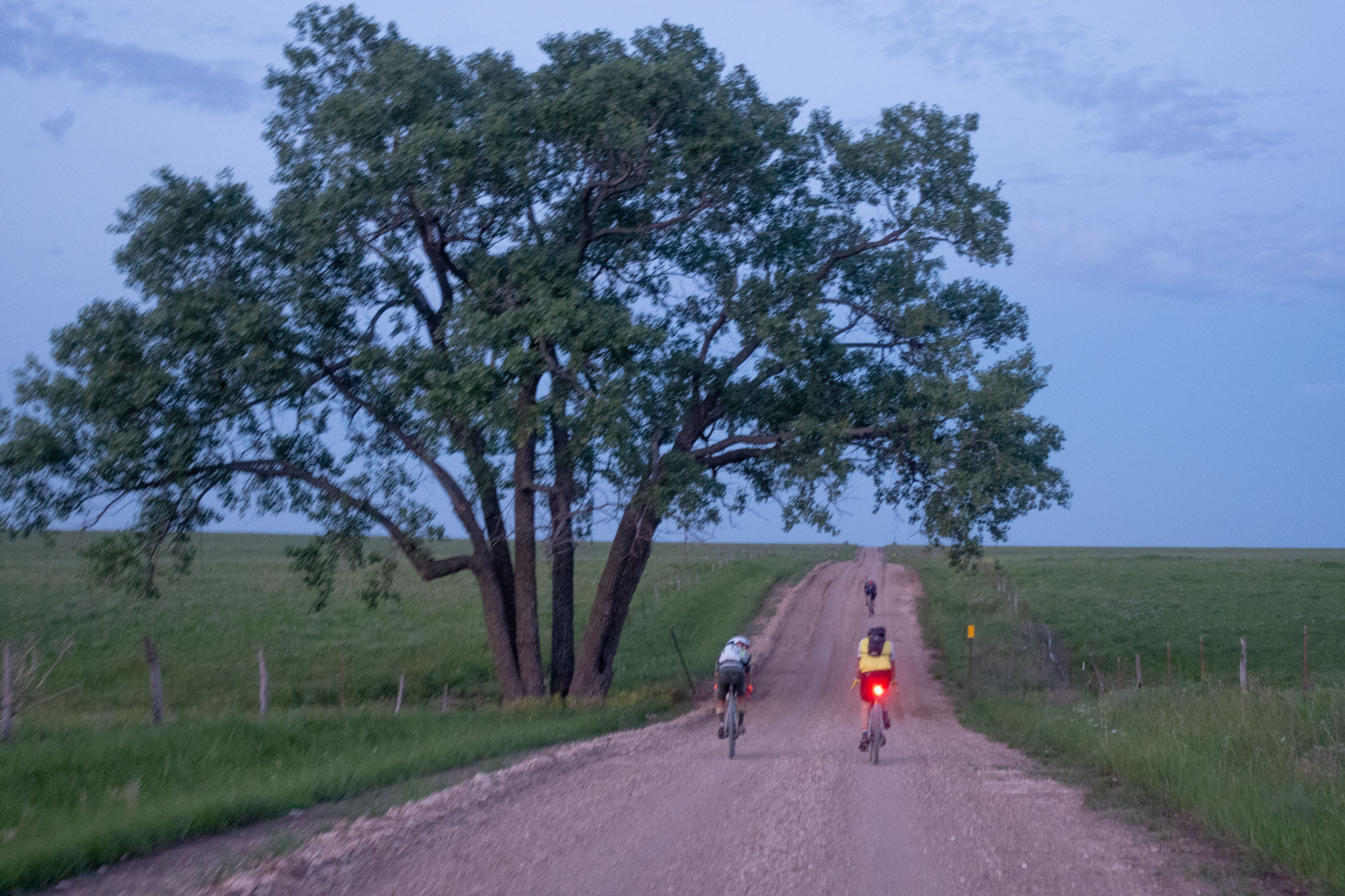
IT: For you – having been on sides of the fence, approaching Unbound as a competitive endeavour and approaching it at very much the opposite end of the spectrum this year on a bike that probably cost less than the event entry – how has having this experience changed the way you think about the products you produce at Rodeo Labs?
SF: We don’t have a lot of manoeuvrability … I’m not able to spin on a dime and say, “We should change everything because of what happened this weekend.” I’ve seen something that will factor into what we do, but we aren’t a company that operates at scale. The people who patronise what we make understand that we’re small, we’re boutique; everything is done custom, and they assign additional value to that. Our bikes aren’t directly better than anybody else; in fact, they may even be worse, if you were to put them on a jig and try and compare A, B and C. But they’re patronised because there’s a culture and there’s a story behind them.
I can’t make a $200 klunker. But if I were gonna say, “This is amazing, I should now promote the klunker lifestyle and Rodeo is going to pivot to cheaper bikes,” I could probably only make a $500-$1,500 klunker. And then, I’ve solved nothing. [laughs] I don’t know what needle I can move there. Those are really big questions with geopolitical economic factors and the cost of labour overseas.
I do think Kent Bicycles [the brand of the beach cruisers] are an interesting case study. We looked them up on the way home, and they’re a 100-year-old company; they’re not owned by Walmart, I think they’re family owned. They had a paragraph in their history where they said, “We used to make bikes in the United States, they were great bikes. And then offshore manufacturing forced us to also offshore our company to be competitive.”
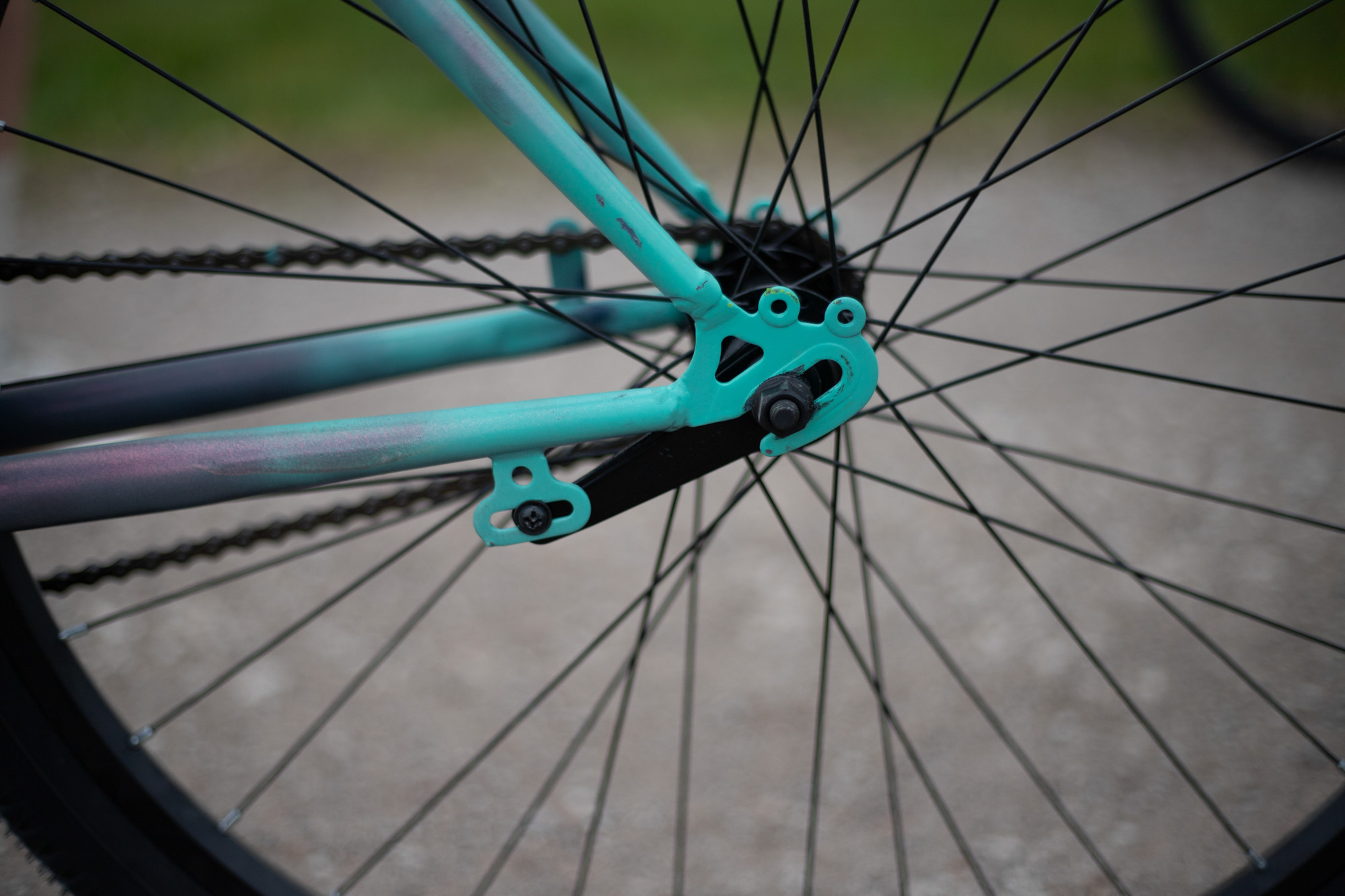
There are so many bigger themes than Rodeo the brand can really engage with and change. But I don’t think that’s our role. Maybe this cruiser ride is our contribution to cycling culture – that may be as good as we can do, in terms of starting a discussion about how expensive bikes are, and how much bike should you buy, or how much bike do you need. That may be it for us – but I do feel good about it, even though this is a tiny blip; ultimately, this ride will be forgotten, and it’s not that important. But in this moment, I’m happy with the fact that there is at least some dialogue happening and some people maybe considering that inexpensive bikes can still be super fun. I think that’s what connected with people.
IT: It’s a celebration of the simple and utilitarian aspects of cycling – which is not a story that you see all that often in the industry or in the media, because it’s not a particularly sexy one. But it’s an important and necessary thing to remember from time to time as well.
SF: Yeah, it’s funny. I’m a voracious consumer of nice things for my own bike – especially owning a company and having access to nice things. I might actually even be more consumeristic sometimes than other people because I work in bikes, and I own the company, so I’m just as focused as anybody else on trying to make my bike light or good. So I can relate to those themes. I think for me, it was a kind of a pleasant reminder. I am surprised that it went so well. I’m kind of having these waves of realisation and awareness and that’s going to keep trickling down.

IT: There’s clearly a lot of thought that you’ve put into this – and that corresponds with the version of you that I’ve followed on social media and through your website for a number of years, where you’ve often struck me as eloquent and forthcoming in how you speak about cycling and about the industry.
So, as a sort of final question. If I were to give you a hypothetical crown and sceptre and pronounced you the Tsar of Gravel, how do you shape these events so that they are still an inclusive space that keeps gravel fun, or makes gravel fun again? Or maybe I’d put it like this: did the “spirit of gravel” ever exist, and can it be brought back?
SF: I do think it existed. I really do admire the people who did – particularly this event, but other events too – in the early years when they really didn’t know if they were going to make it, and not a lot of people were even willing to step up and do it. There was a really big sense of adventure to that. I think if I had to say what the spirit of gravel is, I would say it’s that spirit of being okay with the adventurousness of it, and being willing to embrace that, even at risk of failure or not making it; testing yourself going out on a long bike ride, finding out what happens and enjoying it, success or failure. Those are the ingredients of the spirit of gravel to me.
I am not a Gravel Tsar, and there are many, many, many other people that are. But look, if Unbound were my event, I would respect the racing, because I think it is fantastic; it is fantastic to see what humans can do. And I would leave room for the obvious narratives that are being talked about, because they are interesting to some people.
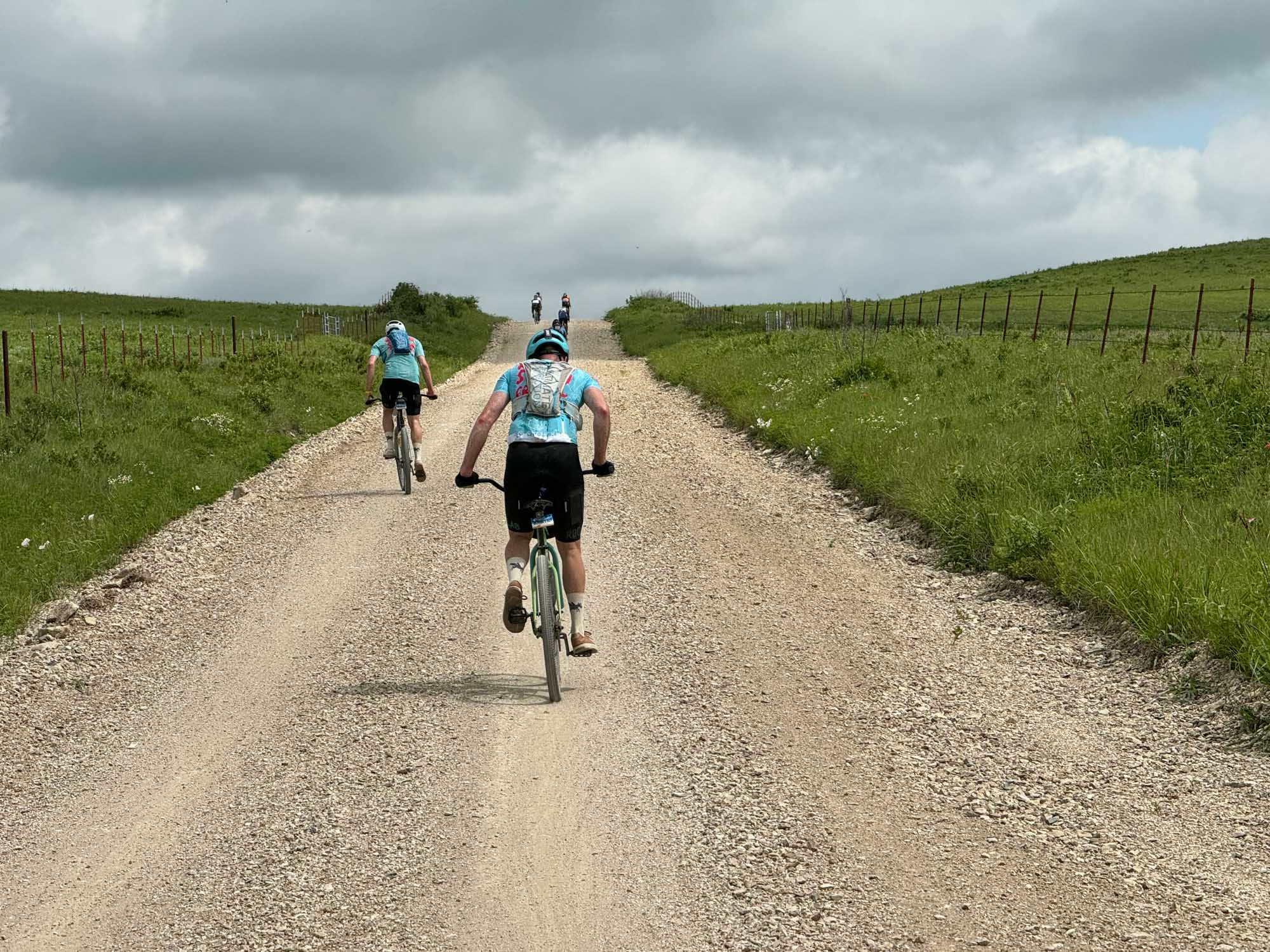
I’m not here to gatekeep the fact that racing is or isn’t good, or cool, or the thing to be talking about. I think it’s great. I am a bike racer. But riding with people in the back, and just having some moments of shared endeavour and empathy with people in the back really made me love it back there. I have a soft spot for that. I would do something that invites people to run what you brung so they feel invited into Unbound; to have a “Come as you are” culture that can live alongside the high-end culture. I’m sure that’s easy to say and hard to actually do, but I would do some work on that – to intentionally do some things that aren’t all about the commerce and the expo and the sponsors and the branding and the revenue. I think that that would keep it human, and it would keep it grounded. And it would keep the people who came into the genre for those reasons at the table, maybe even look for some of those people and ask them, “What did you love about it? What do you think it’s lost? And what are ways that we can hold onto it while we grow up?”
IT: Is there anything that you wish I’d asked, or anything that you’d like to add that hasn’t come up yet?
SF: The only thing that I would add – and I’ve told a couple of people this – is that fundamentally, riding these bikes was not significantly more difficult than riding in any other year that I’ve done it. I think people look at the bike and project their expectations onto it. They think it must be hard, and maybe that it was badass: “You must have suffered or been unhappy.” But it is absolutely true that we had a tremendous amount of fun, and we went much quicker than we thought we would ever be able to. Those cheap bikes can cover distances really well! Not so much when you’re going up a steep hill, but anything rolling, anything downhill, anything flat, and that little cruiser can keep up with a modern gravel bike. I was shocked to find that out – I kind of had my mind blown by the $200 bike.

IT: Nice one, Kent!
SF: [laughs] Yeah, nice one, Kent! I hope someone there can see some of this and can take satisfaction in their work. The bikes weren’t perfect – you know, we really had to be careful checking them out, but fundamentally, at the end of the day … I just rode the bike to work yesterday again, and I really thought, this bike has a good amount of goodness for $200.
IT: There’s some Kent brand manager out there that has just seen these bikes being used for something they were never designed for and probably never thought that they could even do.
SF: [laughs] Right? There was a Facebook group I was in where people were talking about tyres at Unbound – just tyres. Asking, like, “Will Gravel Kings survive? Will Maxxis survive?” And I just think about how expensive and complicated gravel tyres and compounds are, and how primitive and one-dimensional the tires we were on were, and it really is just kind of a mind-blowing thing. Like, these tires were great. This cheap $3 tire was great. I couldn’t believe it.
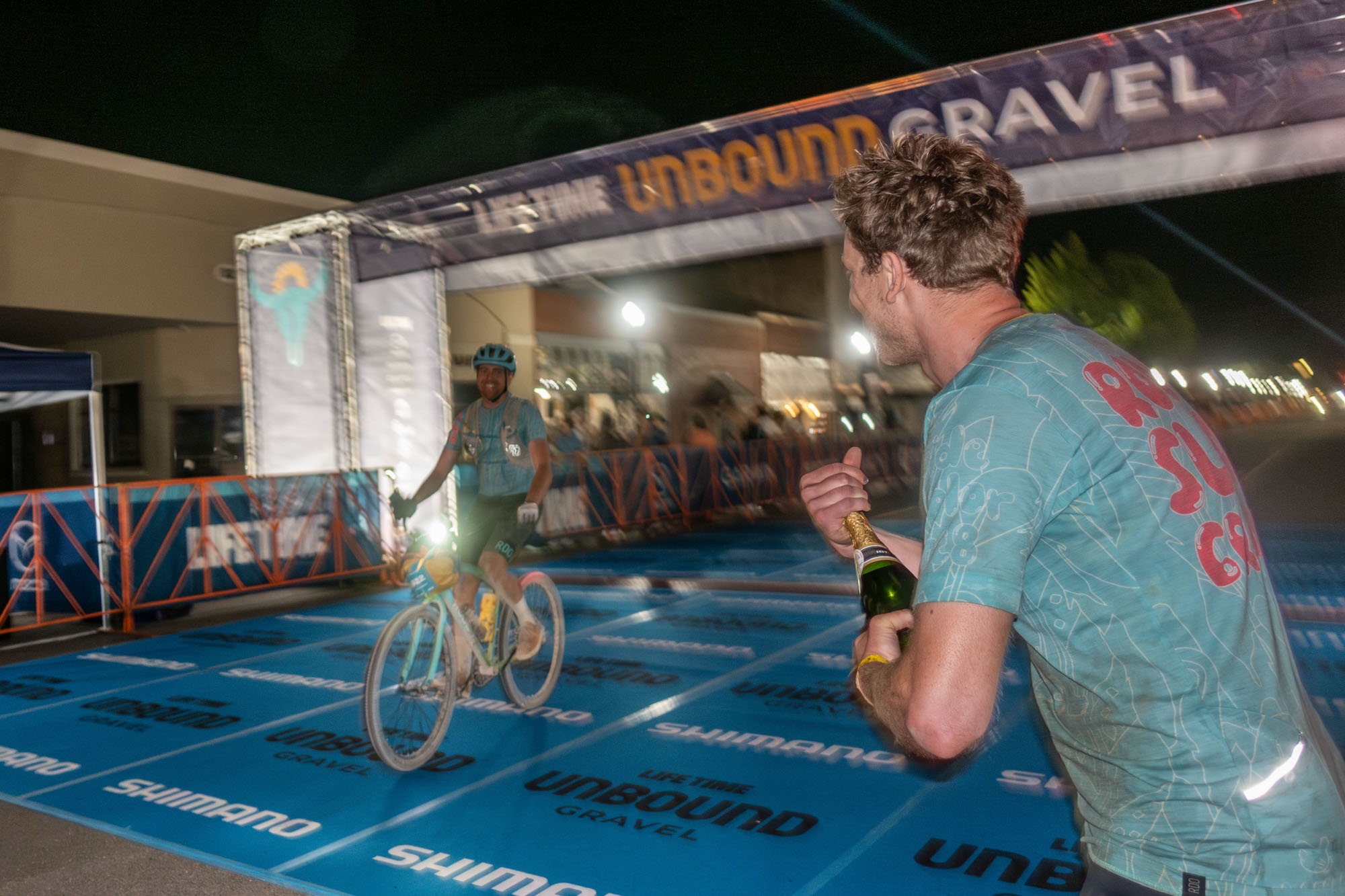
What did you think of this story?

